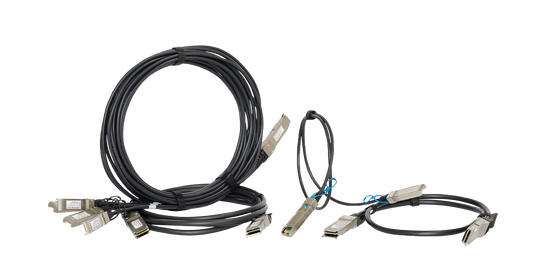There are currently two types of signal modulation being used in next generation Ethernet and InfiniBand technologies - PAM4 (Pulse Amplitude Modulation with four levels) and NRZ (Non-Return to Zero). These modulation types are critical in determining data rate, signal integrity, and efficiency of transmission, with different applications based on the network requirements.
NRZ (Non-Return to Zero) Modulation
NRZ is a binary signalling method in which logic information is represented by high and low voltage levels. It transmits one bit (either 0 or 1) per clock cycle, with a baud rate (rate at which signal can change) equal to the bit rate. Due to its simplicity, NRZ requires less complex hardware, making it an ideal choice for applications with less demanding performance requirements, and where cost is a significant factor.

PAM4 (Pulse Amplitude Modulation, 4-Level) Modulation
PAM4 modulation encodes data using four distinct signal levels, doubling the number of bits transmitted per clock cycle compared to NRZ. This form of modulation encodes logic information in pairs of bits with each signal level representing two bits (00, 01, 10 or 11). The baud rate of PAM4 modulation is half of the bit rate as there is two bits per symbol. This makes it very efficient for high speed transmissions as double the data can be transmitted for a given baud rate compared to NRZ. However, PAM4 modulation requires more sophisticated hardware to manage the signal noise and complexity.

NRZ vs PAM4
PAM4’s ability to encode two bits per clock cycle allows it to transmit information at double the speed of NRZ, as demonstrated in the image below. Each logic level represents a unique voltage which is used to encode the data. Here you can see PAM4’s efficiency in transmitting the signal of ‘011000110101’ by using two bits per clock cycle through the four signal levels.

However, due to this complexity, PAM4 has an increased Signal-Noise Ratio (SNR) of -9.54dB, compared to 0dB in NRZ. This impacts the signal quality and makes it more sensitive to noise, both contributing to a higher Bit Error Rate (BER). To help mitigate this, Forward Error Correction (FER) technology is used to reduce errors in transmission and allow PAM4 to maintain accuracy at high speeds.
NRZ modulation is perfectly suitable for less demanding, lower speed networks. Its simplicity makes it reliable and cost effective, without the need for error correction technology. On the other hand, with exponentially increasing data demands, PAM4 is getting more popular, especially in high end computing environments. With PAM4 modulation, speeds upwards of 400Gbps are possible utilising High Data Rate (HDR) and Next Data Rate (NDR) InfiniBand standards. However, advanced error correction technologies are required to maintain signal integrity, as well as expensive high end hardware and transceivers.
See our range of Direct Attach Copper (DAC) cables here.











